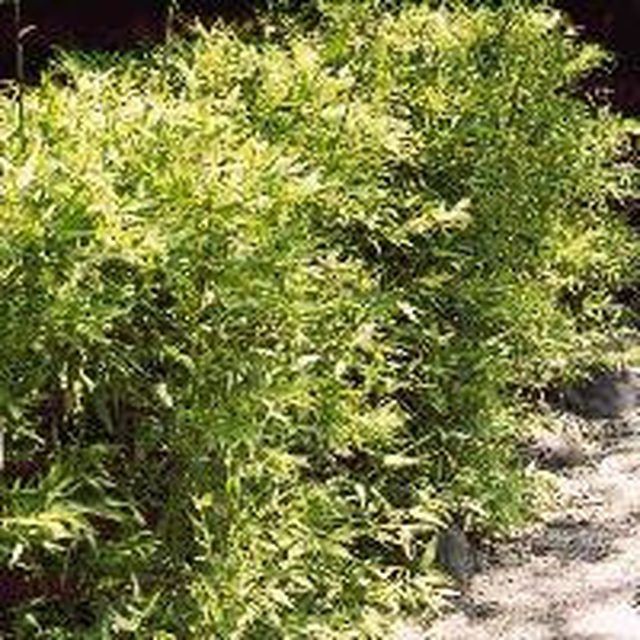Bulbs
Flower Basics
Flower Beds & Specialty Gardens
Flower Garden
Garden Furniture
Garden Gnomes
Garden Seeds
Garden Sheds
Garden Statues
Garden Tools & Supplies
Gardening Basics
Green & Organic
Groundcovers & Vines
Growing Annuals
Growing Basil
Growing Beans
Growing Berries
Growing Blueberries
Growing Cactus
Growing Corn
Growing Cotton
Growing Edibles
Growing Flowers
Growing Garlic
Growing Grapes
Growing Grass
Growing Herbs
Growing Jasmine
Growing Mint
Growing Mushrooms
Orchids
Growing Peanuts
Growing Perennials
Growing Plants
Growing Rosemary
Growing Roses
Growing Strawberries
Growing Sunflowers
Growing Thyme
Growing Tomatoes
Growing Tulips
Growing Vegetables
Herb Basics
Herb Garden
Indoor Growing
Landscaping Basics
Landscaping Patios
Landscaping Plants
Landscaping Shrubs
Landscaping Trees
Landscaping Walks & Pathways
Lawn Basics
Lawn Maintenance
Lawn Mowers
Lawn Ornaments
Lawn Planting
Lawn Tools
Outdoor Growing
Overall Landscape Planning
Pests, Weeds & Problems
Plant Basics
Rock Garden
Rose Garden
Shrubs
Soil
Specialty Gardens
Trees
Vegetable Garden
Yard Maintenance
How to Trim Bamboo Plants
How to Trim Bamboo Plants. The biggest members of the grass family, bamboos are woody evergreen plants that grow in most climates and altitudes, boasting about 1,000 different species. Bamboos are also the world's fastest growing woody plants--some species with growth rates of up to 2 inches per hour! They are significant cultural and economic...
The biggest members of the grass family, bamboos are woody evergreen plants that grow in most climates and altitudes, boasting about 1,000 different species. Bamboos are also the world's fastest growing woody plants--some species with growth rates of up to 2 inches per hour! They are significant cultural and economic resources in East and Southeast Asia, where they are used extensively as a food source, building material and as ornamentals for gardening.
Bamboos require annual pruning to remain attractive. The best time to trim and prune them is during the winter, when their growth has stopped. Any late-arriving shoots that may appear in the early fall will probably not grow leaves until the next warm season, and won't need to be pruned until the following year.
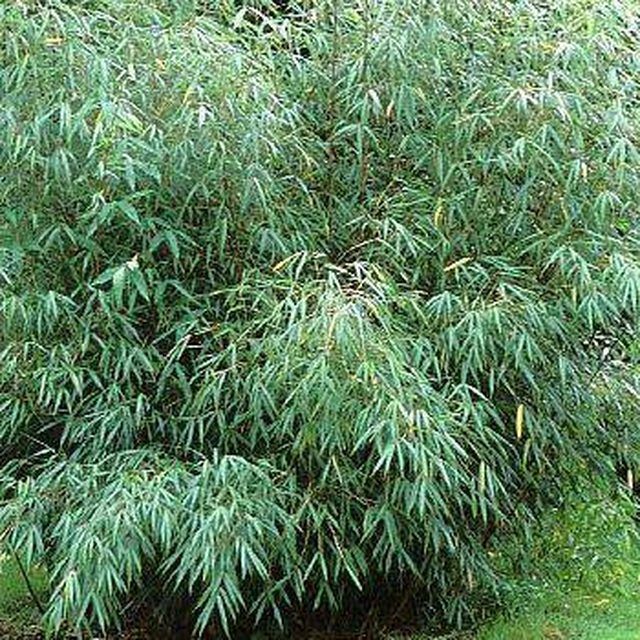
Things You'll Need
Sharp pruning shears
Step 1
Remove any unattractive or dead stems and branches. Bamboos are very sturdy and forgiving, so you can prune them without fear of damaging the plants. Make all cuts just above the nodes to avoid leaving ugly stubs which will die back. Remove at ground level any older culms (stems) which have become unsightly. This is the basic annual maintenance pruning method for most ornamental bamboo varieties. Once bamboo culms have been cut, they won't grow any taller.
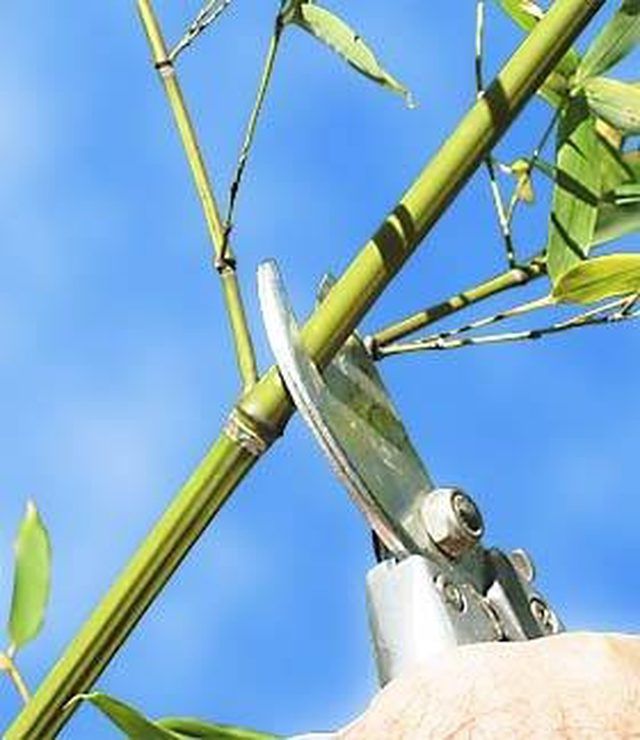
Step 2
Remove smaller and older culms at ground level of taller timber bamboo varieties to thin them. This will give newer, larger culms more room, and they will grow faster.
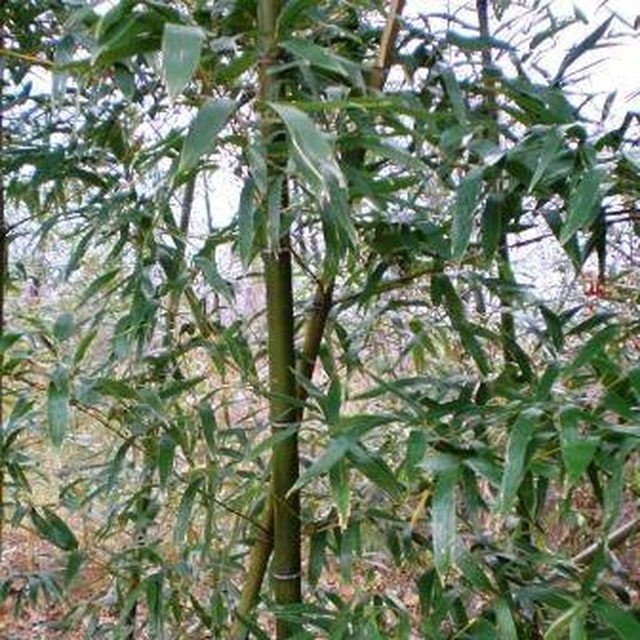
Step 3
Prune bamboo topiaries by topping the culms and removing some of the lower branches, trimming to follow the original lines of the topiaries. Shorten some of the branches on the sides and remove any that don't conform to the shape of the specimen. Pruning is very important for maintaining the form of the plant, as well as for encouraging it to grow more leaves for a fuller appearance. Perform touch-up pruning throughout the growing season to keep the plant under control.
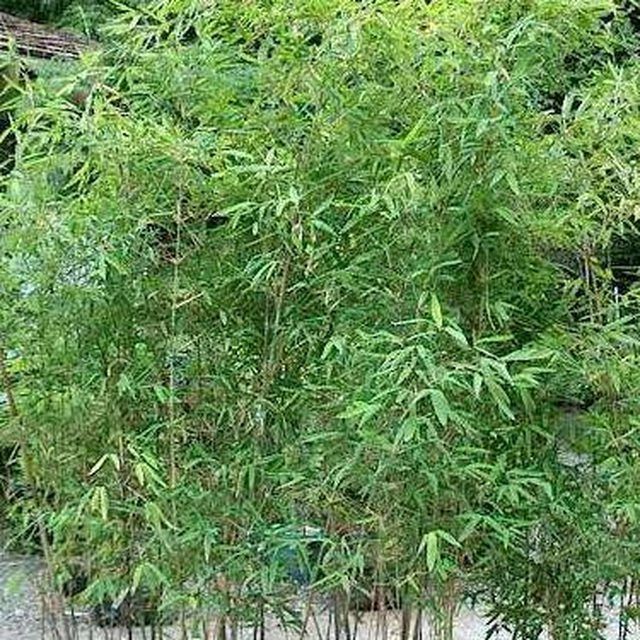
Step 4
Cut ground cover and dwarf bamboos back to the ground each spring, which will rejuvenate the plants. When the new growth quickly comes in, it will be shorter and denser. Pruning them in spring in addition to annual winter maintenance pruning will help to keep them a little shorter as well as more uniform in height. The tops of dwarf varieties may even freeze back in the winter in colder climates, which doesn't affect their landscaping quality. You just won't need to prune them in the spring if this occurs.
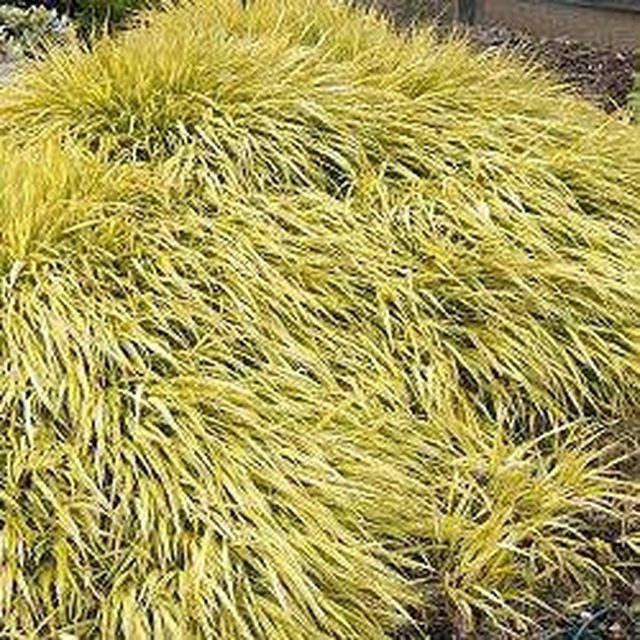
Step 5
Shape bamboo hedge and privacy screen plants simply by trimming off the ends of branches that have become too long, giving the plant an untidy appearance. Remove new shoots which are significantly bigger than the existing culms that are the height that you desire. The culms that will grow in to replace them will be smaller, and they won't grow as tall. This will retain the plant's natural appearance while giving you control over its height and overall size. Hedge and screen bamboos should only require an annual winter pruning, with small touch up trims throughout the growing season to keep them looking neat.
